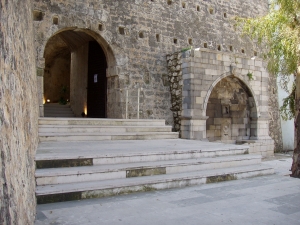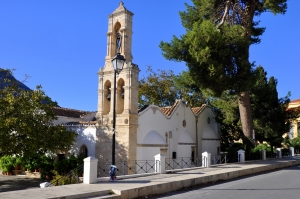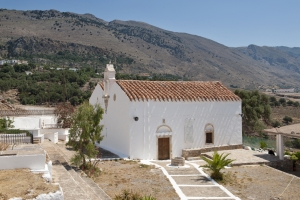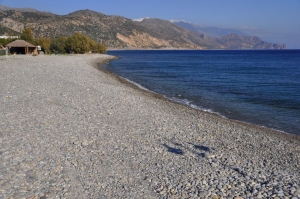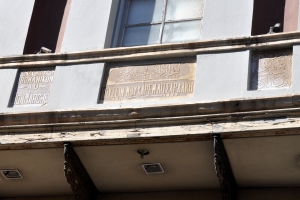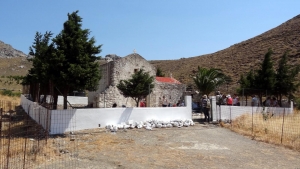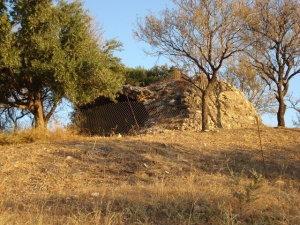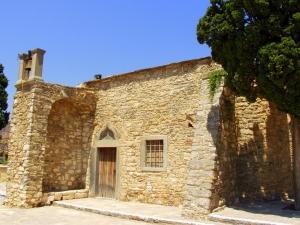The gate of St. George is situated on the eastern side of the Walls of Candia, below the current statue of Eleftherios Venizelos. From this gate the city communicated with the eastern Crete and the quarantine (Lazareto - so it is also known as Gate Lazaretto). Another name was Gate Maroulas, as it headed to the neighborhood of Maroulas, near the current school of Kapetanakion.
The Venetian church of Virgin Mary (Panagia Kera or Faneromeni) is located near the entrance of the town of Archanes. The name Faneromeni (Revealed) is taken after a legend that writes as follows: Once a girl called Maria saw a light at the point where the miraculous icon of the Virgin Mary was hidden. The girl then built the first temple.
The monastery of Panagia Thymiani is located near Sfakia at position Thyme Armi and is one of the most historic sites in Crete. Here on May 29, 1821, the chieftains of Crete preached revolution against the Ottoman Empire. Therefore, the monastery is also called Agia Lavra of Crete (Agia Lavra is a monastery in Peloponnese from where the great Greek Revolution of 1821 started, leading to the liberation of Greece).
Votsala or Halikia are located after the west end of Paleochora harbor, 79km south of Chania city, next to the exit of Kakodiakianos River, and extend for about 1km to the east. Halikia and Pahia Ammos are the two main beaches in Paleohora town. Halikia has round pebbles and is well organized and preferred mainly by Greeks than the sandy beach of Pahia Ammos
The building at 8 Agiou Mina Str was a drapery shop owned by Hussein Muharem Litsardakis. Built of stone and wood with a tiled timbered roof, it was erected in the closing years of Ottoman rule and inaugurated in 1892.
The former monastery of St. Paul (13-14th century) is located near the village Paranimfi near a spring. All around, we see traces of an ancient temple, which was looted. The church is a basilica with single nave and there are traces of frescoes.
Inside the Kritsa village, at position Ambela, we meet the ruins of a small medieval tower with one arch still standing. Apparently the tower was used for overseeing the crops of the region, but also for controlling the passage to Kritsa.
The large cemeterial church of Neapolis is a double-aisled church dedicated to Christ the Savior and All Saints. The church bears frescoes of the 14th century in relatively good condition. The existence of tanks suggests that the site was used as a small monastery.











